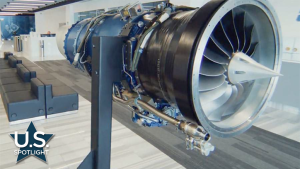MILWAUKEE, WIS. — The Association of Equipment Manufacturers (AEM) have released a report on the state of hiring and possible solutions to enable companies to diversify their workforce.
“A decrease in the rate of births, declining since the 1970s, coupled with decreasing labor market participation, more job openings, a shortfall of immigrants and a surge of retirements, is creating a workforce problem that is hard to ignore,” report author and AEM workforce and industry initiatives senior director Julie Davis stated in a release.
Davis noted over two million people will be needed to move back to the 63.4 per cent labor force rate held in February 2020, a month before the COVID-19 pandemic and subsequent shutdowns threw both labor markets and the wider economy into disarray.
“We also need 175 million more people in the labor force to just bring us back to the number of people who were working at that time,” she said, and noted the labor force participation rate only measures currently employed individuals and those actively seeking work.
“If you’re sitting on the sidelines, as an estimated 40 per cent of our total population is right now, and you’ve chosen not to work or have just given up looking for a job, you are no longer being counted as unemployed.”
She also noted millions more jobs are available than they were prior to COVID-19, with over 10 million job openings in the U.S., an increase of three million from February 2020.
Davis advocated for going to historically overlooked talent pools to address labor shortages, including minorities, veterans and women. She also pointed to ex-offenders whom she cited as the largest and most under-utilized talent pool with the highest rate of unemployment.
“Many correctional facilities have skills training programs that fit manufacturing needs. Approximately 650,000 second-chance citizens return to their communities annually. The chance of being a repeat offender drops significantly if a person has a living-wage job. If you have not engaged with this audience before, now is the time,” she said.
Davis also stressed the importance of hiring from minority populations and stressed the industry must not think of hiring from this talent pool as optional.
“Think about where you’re placing your ads, what your wording implies about your company culture, and ways that you can invite this talent pool in and make them feel welcome. Doing what you have always done has not accomplished this as an industry. Be intentional and start small if you’re overwhelmed by the prospect of making changes in this area,” she said.
Davis also stressed manufacturing needs to find more effective ways to invite women into the industry as they comprise half of the population, and that with over a quarter of a million service members leaving their branches annually, veterans are another underserved talent pool.
She also said while immigration is a short-term solution, it may not work in the long-term.
“Birth rates in many of the countries we get immigrant workers from are slowing, and unemployment is low. The onset of COVID-19 and advancement of restrictive immigration policies resulted in a sudden drop in our immigration numbers,” Davis said.
Industry also hasn’t adequately prepared for a wave of retirements that “many of us knew was coming,” she said.
The uncertainties currently affecting the industry do have a positive aspect, she said.
“The combined forces of fewer people, more jobs, uncertain immigration and a high level of retirements created a perfect environment for changing how we look at recruiting. After all, as we have learned, doing what we have always done is not even getting us what we used to get,” Davis said.











Recent Comments